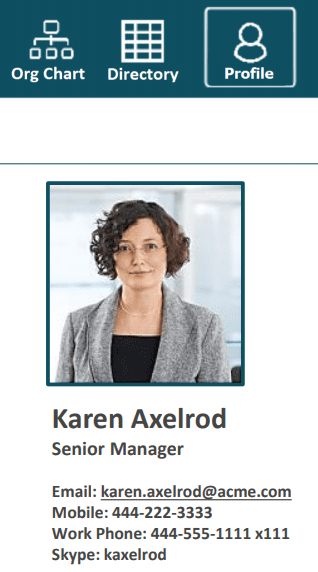OrgChart ROI
Moving to a specialized org chart solution shows an
immediate return on investment
The need for clear, up-to-date visualizations of the workplace are a constant of the modern organization. Organizational charts, in one form or another, have been used since the 19th century to show the reporting structure of companies around the globe. They are used for many purposes including employee orientation, workplace analysis, planning and recruitment. As companies become more dispersed and employee movement—both internal and external—more prevalent, the demand for accurate org charts has only increased.
While some companies have adopted the new technology available for charting quickly, some are still meeting this need for workplace visualization with manual methods. We see HR professionals and administrators using software maladapted for the purpose such as simple drawing and charting tools. These methods cause inefficiencies including latency in reporting, extended production times and inaccurate data presentation. Improvements can be made immediately by switching to a specialized org charting software like OrgChart. In this blog, we explore what the specific returns on investment are when a company switches to a fully automated and specialized software for their workforce planning and modeling needs.
Creation and Maintenance

Expanded profile view in OrgChart Now
Using drawing tools which require partial or total manual work to create or update takes hundreds of hours away from employees that could be providing real value to a department. Tools such as PowerPoint or VIsio are often used extending the time and increasing the error rate of chart creation. Switching to an automated solution, which connects directly to HRIS data which is already being maintained, means no matter what frequency charts are required to be produced teams always have one at their fingertips.
Collaboration and Efficiency
Having a comprehensive org chart housed on the company intranet containing accurate real-time data results in cost savings across the board. Having a readily available trusted source for viewing the company hierarchy can decrease the demand on HR administrators from employees seeking information on their colleagues. OrgChart can include profile photos, job descriptions, skills, roles and other pertinent information. New employees can orient themselves fast, reducing the time and resources needed to onboard them. Managers are able to identify human resources needed for their teams or projects without involving HR in their search. Having HR data connected directly to these cloud-based charts is essential for employee confidence in the information being provided.
Risks and Opportunities
With proper planning, costly gaps in organizational hiring can be avoided. A tool that clearly measures and displays metrics such as age to retirement, flight risk and bench strength can help companies anticipate talent gaps before they happen. Manual charts generally show only rudimentary information such as company hierarchy and job position. With the OrgChart connector function, data can be pulled in from all sorts of financial and HRIS platforms to analyze key metrics that can predict a company’s future state.
While the benefits of an automated org chart solution might seem obvious to a HR professional working day-to-day in the space, IT and financial areas of the business might require more evidence to be persuaded of the software’s value. Above are just a few of the very concrete and immediate ways companies who switch to an automated org chart solution begin to see return on their investments.
Also of importance when deciding on an org chart solution is to select a partner that will support the onboarding of the new technology and who work to specialize it to the organization’s unique needs. Speak to one of our experts today to make sure you get the most out of your org chart software solution with a free demo of OrgChart.




